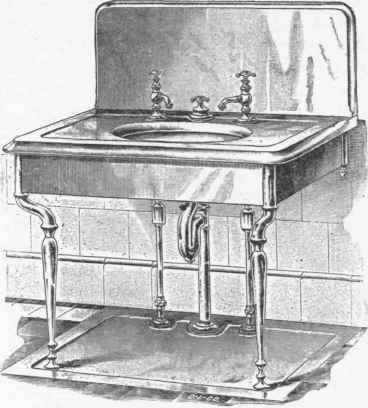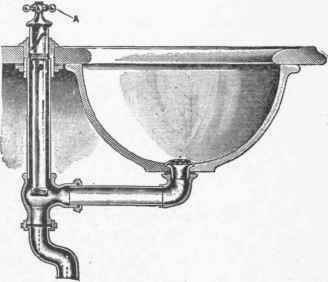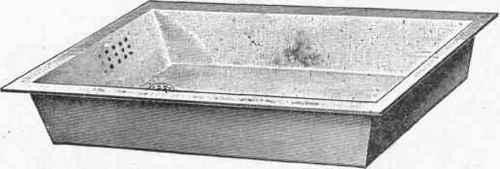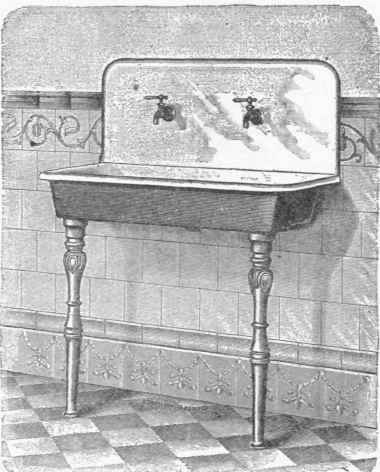Sinks
Description
This section is from the book "Cyclopedia Of Architecture, Carpentry, And Building", by James C. et al. Also available from Amazon: Cyclopedia Of Architecture, Carpentry And Building.
Sinks
Sinks are made of plain wood, and of wood lined with sheet metal, such as copper, zinc or galvanized iron. They are also made of sheet steel, cast iron, either plain, galvanized or enameled, and of soapstone and porcelain. Each has its advantages and disadvantages. The wooden sink is liable to leak, and is difficult to keep thoroughly clean. The lined sink is most satisfactory when new, but holes are quite easily cut or punched through the lining and it then becomes very objectionable from a sanitary standpoint as the greasy water and vegetable matter which works through the opening causes the woodwork to decay rapidly and to give off in the process a gas which is not only unhealthful but tends to destroy the lining of the sink from the underside so that its destruction is rapid after a leak is once started. The cast iron sink is satisfactory. The appearance is improved by galvanizing, but this soon wears off on the inside. Enameled sinks are easily kept clean but likely to become cracked or broken from hard usage or from extremes of hot or cold; the porcelain sink has the same defects;

Fig. 21.

Fig. 22.
they are both however well adapted to places where they will receive careful usage.
Taking all points into consideration the soapstone sink may perhaps be considered the most satisfactory for all-around use.

Fig. 23.
It will not absorb moisture; is not affected by the action of acids; oil or grease will not enter the pores and it is not injured by hot water nor liable to crack.
Fig. 24 shows the ordinary cast iron sink, made to be set in a wooden casing; this is not to be recommended however, and it is much better to support them upon iron brackets or legs. Fig. 25 shows an enameled sink mounted in this way. A porcelain sink with dish racks is shown in Fig. 26. This is a good form for a pantry sink which is used only for washing cutlery, glassware, crockery, etc., and is not subjected to hard usage. A slop sink is shown in Fig. 27. This, as will be noticed, is provided with an extra large waste pipe and trap to prevent clogging. These sinks are made of cast iron with different finishes and of porcelain.

Fig. 24.
Set tubs, for laundry use are made of soapstone, slate, cast iron (enameled or galvanized) and of porcelain. What has been said in regard to kitchen sinks applies equally well in this case.

Fig. 25.
A set of enameled tubs is shown in Fig. 28.

Fig. 26.

Fig. 27.

Fig. 28.
Continue to:


